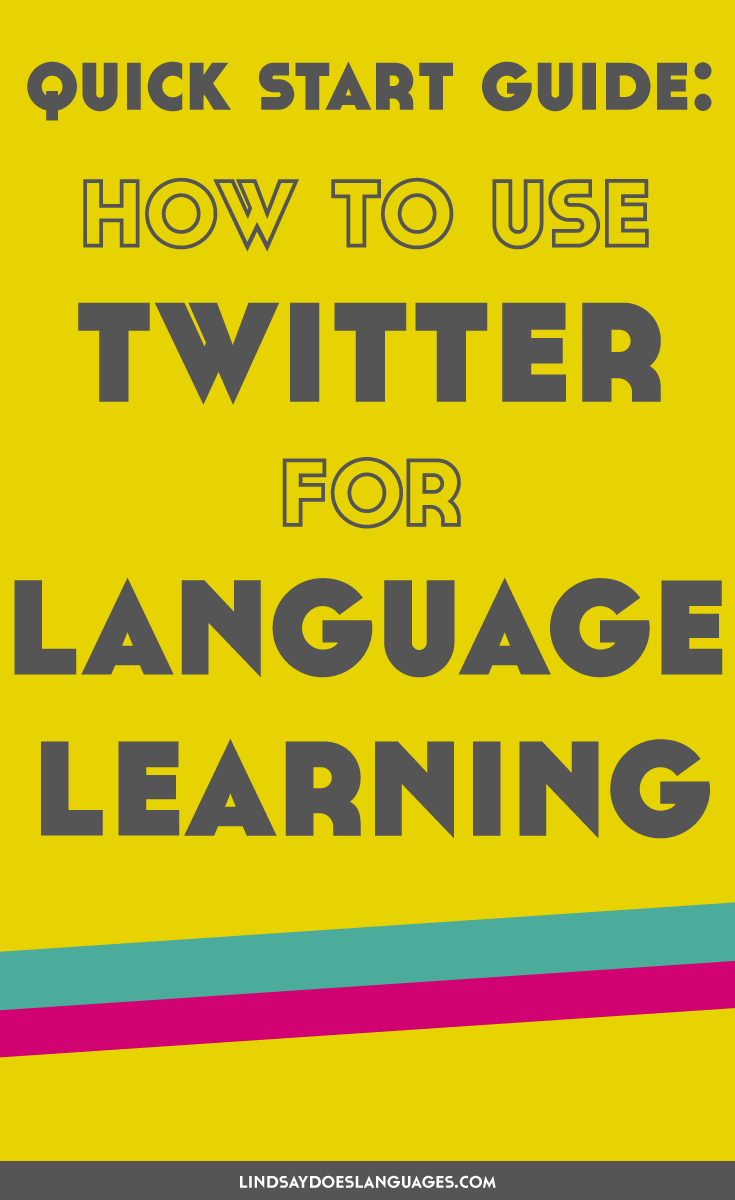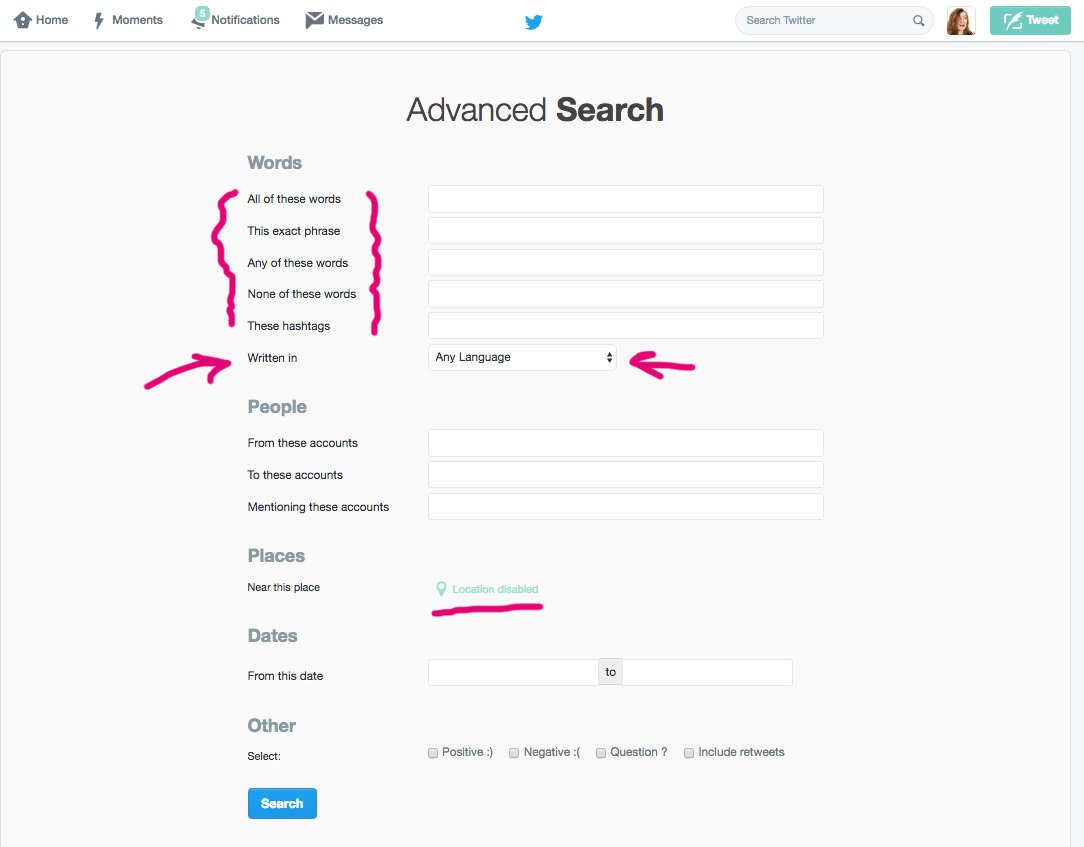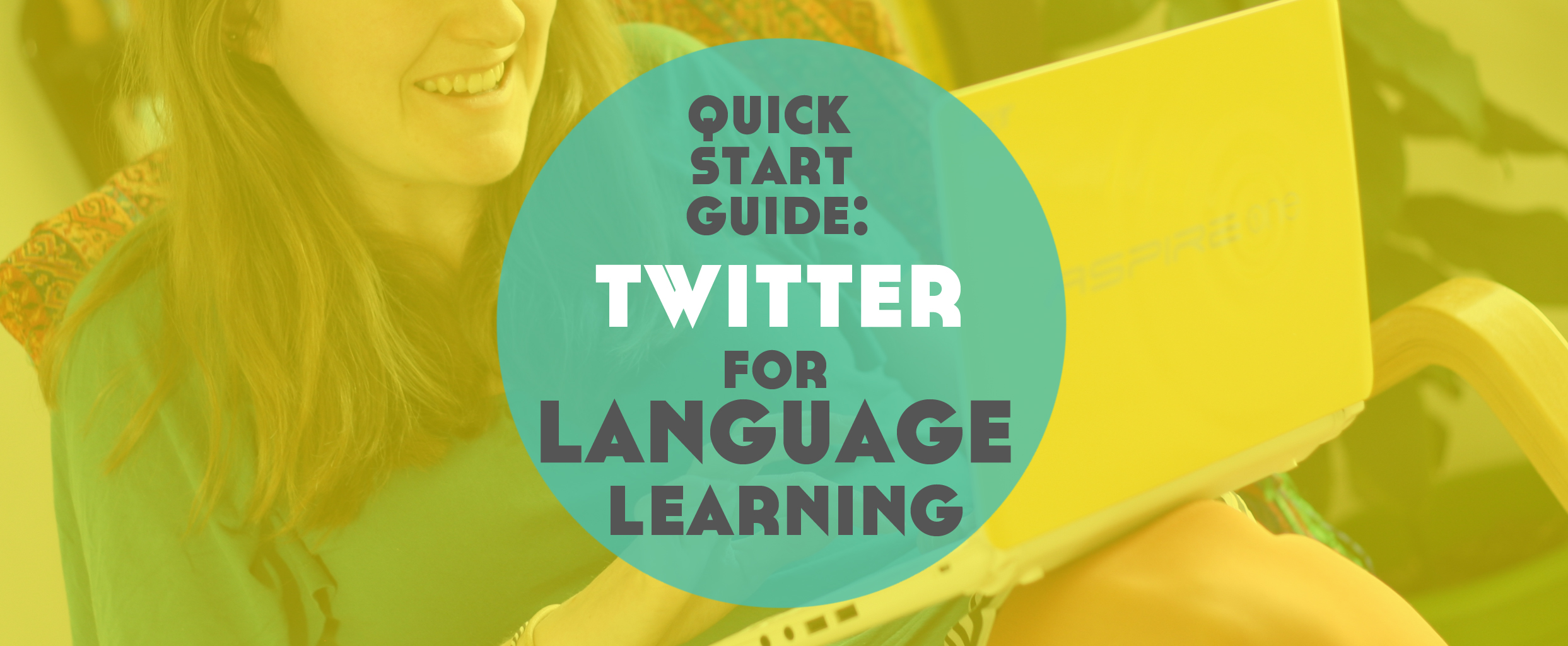January 16th, 2017
The Quick Start Guide to Twitter for Language Learning
When it comes to the most current example of language, nothing out there rivals social media. I’ve talked in detail on the blog before about how to use Snapchat and Instagram for language learning. Well, today is the turn of Twitter.

If you’re curious as to why social media is such a crucial language learning tool, check out this blog post explaining just that and then head back here to read on.
Terminology
Just in case you’re new to Twitter completely, never mind just using it for language learning, I want to share some of the basic terminology I’ll be using in this post and that you’ll see on Twitter itself.
#
Hashtags in their modern use originated on Twitter, so this seems like a good place to start. They’re a great way (if not the best way) of searching for relevant content and connecting with like-minded people online.
You can use them as part of the search feature, to join a Twitter Chat or to join a challenge. We’ll focus on all of these in more detail further down this post.
Basically, they make whatever you put after the hashtag clickable, linkable and more searchable. If you use spaces, that won’t work – for example: #WeDoLanguages will work but #We Do Languages won’t.
@
Your Twitter username will be preceded by ‘@’. This is also how you can quickly connect to other Twitter users by including their username with ‘@’ in your Tweets.
Retweet
What you share on Twitter is a tweet. However, when you share what someone else has shared, this is a retweet.
Ok, no we’re totally up to speed with the lingo, let’s get into it.
Input
The first thing you’ll want to do, especially if you’re completely new to Twitter, is focus on getting input in the language that you’re learning, in other words – things to read and listen to. This means curating your own feed as far as possible to give you content to consume in your target language. In this post, I’ll focus on three simple ways to do this.
Search – especially Advanced Search
My absolute favourite piece of advice when it comes to using Twitter for language learning is the advanced search feature. Whether you’re just looking for new accounts to follow in your target language or you’re researching a specific phrase, it proves pretty helpful.

As you can see, you can search by both keywords and specific phrases. So let’s say you’ve just come across the French expression “vachement cool”, it’s completely new to you, and you want to see some examples of how it’s used. You can type it in the ‘This exact phrase’ search bar.
But maybe you’re just interested in filling your Twitter feed with the language you’re learning. In which case, filter tweets via the ‘Written in’ language box in advanced search.
These two are my favourite ways to filter Twitter and get what I’m looking for in the language I’m learning, but there’s plenty of other ways you could play around with the search too. For example, you can search Twitter via location as well.
Follow accounts in your target language
Once you’ve had a little play with the search feature and found some useful accounts to follow, well..follow them! The more you follow accounts that are useful to you for language learning, the more interesting and useful your feed will be.
Not only that but it will also tell Twitter what kind of accounts you’re looking for and help to curate better options in your ‘Who to follow’ sidebar, normally found on the righthand side of the feed when on a desktop.
Change the language
And finally of course, you can change the language you see Twitter in. It’s minimal and most of the language such as ‘retweet’ will be the same or similar and it won’t change the language of tweets, but if it’s immersion you’re going for, it’s aways worth doing this for a little extra.
Output
Once you’ve got set up with your input, it’s time to focus on output. As you’ve probably guessed by now because you’re smart, this means you actually using, practising and sharing the language you’re learning, rather than simply consuming content created by others. Again, we’ll focus on three simple ways today.
Find a study buddy or language exchange partner
Finding accounts to follow is one thing. Actually interacting is the next level. Woop!
After finding and following interesting people who tweet in your target language, connect with them. If you’re nervous about your language skills start simple by liking or retweeting a couple of their posts, and then when you’re ready, reply to them or tweet them directly.
Of course, it would be wrong of me to suggest that if you do this, everyone will respond and it’ll be rainbows and butterflies forever. So there’s something worth considering here: do you think that the people you’re reaching out to have similar interests to you or are you just connecting with the first person you find that speaks the language you’re learning?
Something I’ve learnt across my many years of language learning that’s really important (both from my own experience and the way I’ve been treated by others) is that just because someone speaks the language you learn, that doesn’t make them your teacher. For a few reasons…
A) in the sense that they’re not necessarily qualified to teach you.
B) in the sense that they probably don’t want to.
And C) if they are actually a teacher, don’t expect them to teach you for free.
So consider this before you expect that one message you send to lead to a free teacher for the next year. What you’re more likely to find is a friend. Perhaps a study buddy, perhaps a language exchange partner, perhaps just a simple online acquaintance.
That said, don’t let it put you off. Remember, there’s only so much language we can learn on our own before we need to connect with actual speakers and try it out.
Write short tweets every day in your target language
If connecting with others directly isn’t for you right now, no worries! You can still use Twitter as a way to practise your language. Rather than responding to other people’s content, create your own.
Set yourself a goal to tweet regularly in the language you’re learning. It could be something you do every morning, or every evening, or throughout the day, or just once a week. Regardless, it’s a simple goal you can add to your language routine right now.
The great thing about tweets is how short they are and the fact that they’re written content. Most social media platforms are great for language output when it comes to video, and therefore speaking. However for writing, Twitter is a great shout.
Twitter chats
Finally, see if you can find a Twitter chat in the language you’re learning, or if not, at least a hashtag that you can join in with.
It can be tricky to find comprehensive lists of chats to connect with, however this one from Participate Learning is pretty good, although there is a focus on teaching. Try typing the language you’re learning in the search bar to see if there’s anything for you.
The main difference between Twitter Chats and just joining in using a hashtag is that Twitter Chats take place at a certain time and are usually quite regular with that. However, if you’re tweeting with a hashtag to join a conversation, you can do this at anytime.







